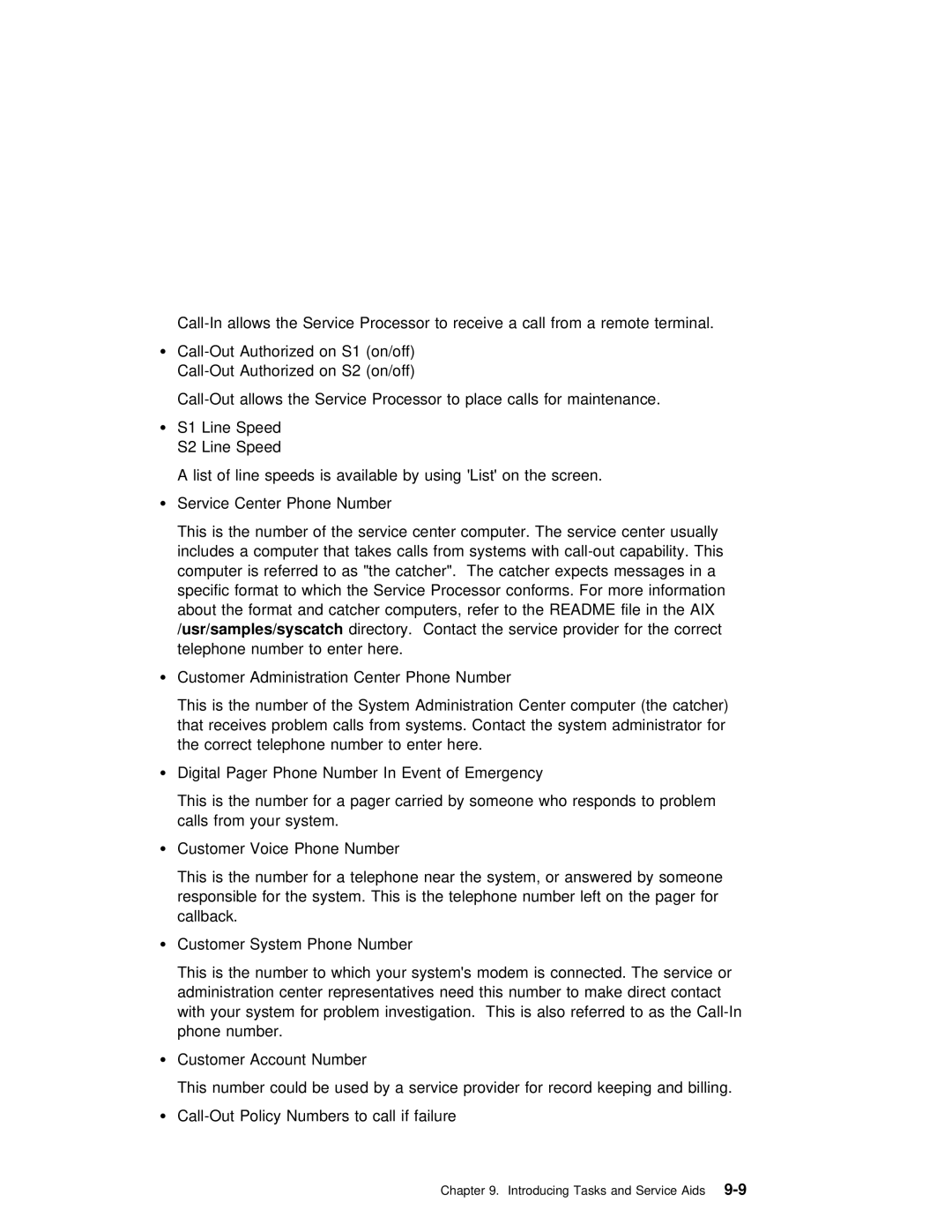Ÿ
ŸS1 Line Speed
S2 Line Speed
A list of line speeds is available by using 'List' on the screen.
ŸService Center Phone Number
This is the number of the service center computer. The service center usually includes a computer that takes calls from systems with
about the format and catcher computers, refer to the README file in the AIX
/usr/samples/syscatch directory. Contact the service provider for the correct telephone number to enter here.
ŸCustomer Administration Center Phone Number
This | is the number of the System Administration Center | computer | (the catcher) | |
that | receives problem calls from | systems. Contact the | system | administrator for |
the | correct telephone number to | enter here. |
|
|
ŸDigital Pager Phone Number In Event of Emergency
This | is the number for | a pager carried by someone who responds to problem |
calls | from your system. |
|
ŸCustomer Voice Phone Number
This is the number for a telephone near the system, or answered by someone responsible for the system. This is the telephone number left on the pager f callback.
ŸCustomer System Phone Number
This is the number to which your system's modem is connected. The service or
administration center representatives need this | number to | make direct | contact |
with your system for problem investigation. This | is also | referred to | as the C |
phone number. |
|
|
|
Ÿ Customer Account Number |
|
|
|
This number could be used by a service provider for record keeping and bill
Ÿ
